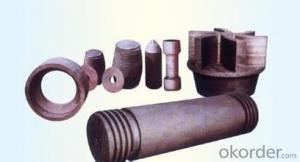Graphite electrodes, the unsung heroes of the metallurgical industry, are often overlooked despite their crucial role in the production of various metals. These cylindrical wonders are made from high-quality graphite, which is a form of carbon that’s been heated to extremely high temperatures. The process transforms the graphite into a material with unique properties, making it an essential component in electric arc furnaces (EAFs) and ladle furnaces. But what drives the demand for these graphite electrodes? Let’s dive into the world of metallurgy and explore the factors that make these carbon-based powerhouses so sought after.
First and foremost, the demand for graphite electrodes is closely tied to the global steel production. As the largest consumer of graphite electrodes, the steel industry’s growth directly impacts the need for these cylindrical workhorses. With the world’s population growing and urbanization on the rise, the demand for steel in construction and infrastructure is skyrocketing. This, in turn, fuels the demand for graphite electrodes, as more EAFs and ladle furnaces are required to meet the increasing production needs.
Another factor contributing to the demand is the type of steel being produced. Different types of steel require different production methods, and some methods are more electrode-intensive than others. For instance, the production of high-grade steel, which is used in specialized applications like automotive and aerospace industries, requires a higher quality of graphite electrodes. This is because high-grade steel demands a more precise and controlled melting process, which can only be achieved with the best electrodes.
The quality of graphite electrodes is also a significant factor in driving demand. The better the quality, the longer the electrodes can last, reducing the need for frequent replacements. High-quality electrodes also ensure a more efficient and cleaner melting process, which is essential for producing high-grade steel. Manufacturers are always on the lookout for the best graphite electrodes to maintain the quality and efficiency of their steel production processes.
Technological advancements in the steel industry also play a role in shaping the demand for graphite electrodes. As new technologies emerge, they often require better, more advanced materials to function effectively. For example, the introduction of electric arc furnaces with higher power ratings has led to an increased need for high-performance graphite electrodes that can withstand the intense heat and electrical currents.
Environmental regulations and the push for greener production methods have also influenced the demand for graphite electrodes. As industries strive to reduce their carbon footprint and adopt more sustainable practices, the need for energy-efficient and environmentally friendly materials becomes more apparent. Graphite electrodes, with their ability to conduct electricity efficiently and withstand high temperatures, are a natural fit for these greener production methods.
The geopolitical landscape can also impact the demand for graphite electrodes. Changes in trade policies, tariffs, and international relations can affect the availability and cost of raw materials, which in turn influences the production and pricing of graphite electrodes. Additionally, the location of graphite electrode manufacturers and the proximity to steel production facilities can also play a role in demand.
Lastly, the supply and production capacity of graphite electrodes cannot be ignored. The availability of high-quality graphite and the ability of manufacturers to produce electrodes efficiently and at scale are crucial in meeting the growing demand. Any disruptions in the supply chain or limitations in production capacity can lead to shortages and affect the overall demand for graphite electrodes.
In conclusion, the demand for graphite electrodes is a complex interplay of various factors, including global steel production, the type of steel being produced, the quality of electrodes, technological advancements, environmental regulations, geopolitical factors, and supply and production capacity. Understanding these factors is essential for manufacturers, suppliers, and end-users to make informed decisions and adapt to the ever-changing market dynamics. So, the next time you see a graphite electrode, remember the vital role it plays in shaping the world around us.

